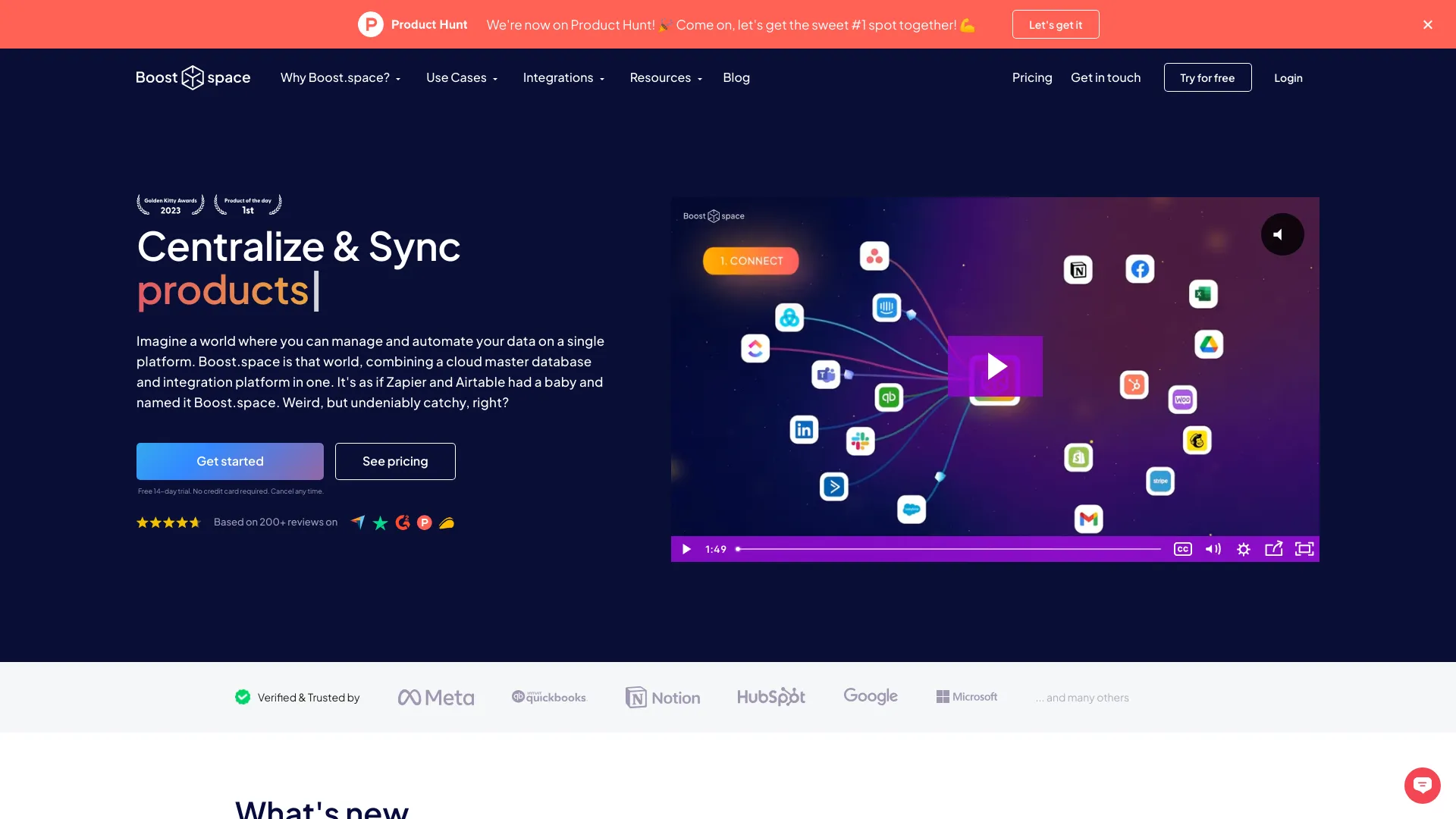- Home
- No-Code&Low-Code
- Boost space

Boost space
Open Website-
Tool Introduction:AI-ready data sync: two-way, real-time, no-code, 2,000+ apps.
-
Inclusion Date:Nov 05, 2025
-
Social Media & Email:
Tool Information
What is Boost space AI
Boost space AI is a data integration and synchronization platform built to unify fragmented information across your stack. It delivers two-way sync, consolidation, and data standardization so every tool shares the same, real-time source of truth. As the first AI-ready data sync platform powered by the Model Context Protocol (MCP), it enables you to sync, enrich, and automate across 2,000+ integrations without code. With flexible mapping, deduplication, and governance controls, it creates a reliable, scalable foundation for enterprise analytics, operations, and AI agents.
Main Features of Boost space AI
- Two-way sync and consolidation: Keep data consistent across apps and databases with bidirectional updates and unified records.
- Standardization and schema mapping: Normalize fields, map objects, and harmonize formats to build a uniform data layer.
- MCP-powered AI readiness: Expose clean, up-to-date data to AI agents and workflows via Model Context Protocol.
- No-code automation: Orchestrate data flows, triggers, and actions across 2,000+ integrations without writing code.
- Data quality tools: Deduplication, enrichment, validation rules, and conflict resolution improve accuracy.
- Real-time and scheduled syncs: Choose streaming or batch to match operational and analytics needs.
- Monitoring and lineage: Dashboards, alerts, logs, and audit trails for visibility and compliance.
- Enterprise scalability: Role-based access, governance policies, and high-throughput pipelines for large teams.
Who Can Use Boost space AI
Boost space AI suits data teams, RevOps and Marketing Ops, product analytics, IT and integration engineers, and AI platform teams. it's useful for unifying customer data, powering AI assistants with trusted context, syncing SaaS tools, feeding warehouses and BI dashboards, and automating cross-tool workflows in startups through large enterprises.
How to Use Boost space AI
- Connect sources and destinations: select from 2,000+ apps, databases, and warehouses.
- Choose or create a data model: map objects and fields to a standardized schema.
- Configure sync rules: set two-way or one-way sync, schedules, and conflict resolution.
- Enable enrichment and transformations: apply dedupe, validation, and AI-driven enrichment.
- Build automations: trigger actions across tools using no-code workflows.
- Test and validate: run a sandbox sync, review logs, and verify data quality.
- Go live and monitor: deploy, track performance, and set alerts for anomalies.
- Iterate and scale: refine mappings, add connectors, and extend governance as needs grow.
Boost space AI Use Cases
- Customer 360: merge CRM, marketing, and support data to create a unified profile for analytics and personalization.
- Sales and RevOps: automate lead routing, account dedupe, and two-way CRM–MAP sync to reduce manual work.
- Product analytics: consolidate event data into a warehouse and push insights back to CRMs and tools.
- AI assistants and agents: supply consistent, MCP-accessible context for chatbots and copilots.
- Finance and operations: standardize subscription, invoice, and inventory data across systems.
Pros and Cons of Boost space AI
Pros:
- Robust two-way sync with data consolidation and standardization.
- MCP-powered access makes data AI-ready for agents and RAG workflows.
- No-code automation across 2,000+ integrations.
- Strong data quality, lineage, and governance features.
- Scales for enterprise performance and reliability.
Cons:
- Initial mapping and standardization can be complex for large schemas.
- Learning curve for advanced governance and automation features.
- Throughput and connector capabilities may vary by source or API limits.
- Total cost and resource usage may increase with high data volumes.
FAQs about Boost space AI
-
Does Boost space AI require coding?
No. It offers no-code setup for most workflows, with advanced options for custom transformations if needed.
-
How is it different from traditional ETL?
It supports two-way sync and operational use cases, not just one-way loads to a warehouse, and standardizes data for AI and apps.
-
What does MCP enable?
MCP lets AI agents and tools securely access consistent, real-time data and functions exposed by the platform.
-
Can it run in real time?
Yes. You can combine real-time streaming with scheduled batch syncs based on use case.
-
How does it handle data quality?
Through validation rules, deduplication, enrichment, conflict resolution, and continuous monitoring with alerts.



